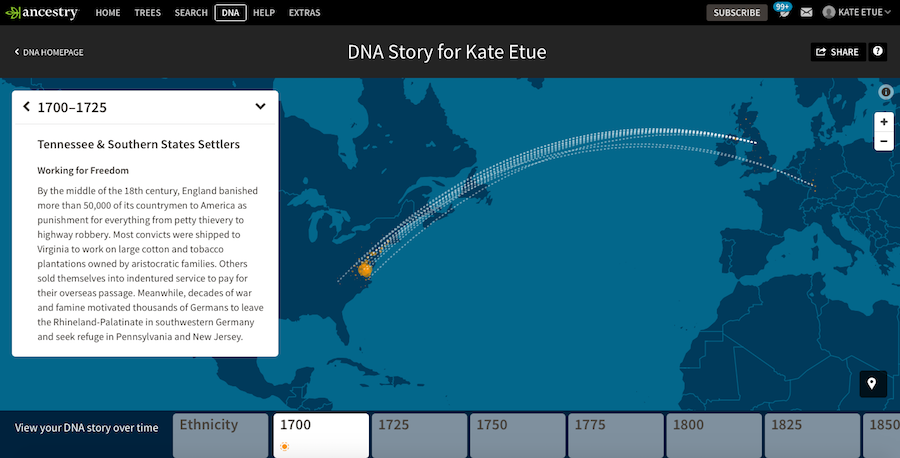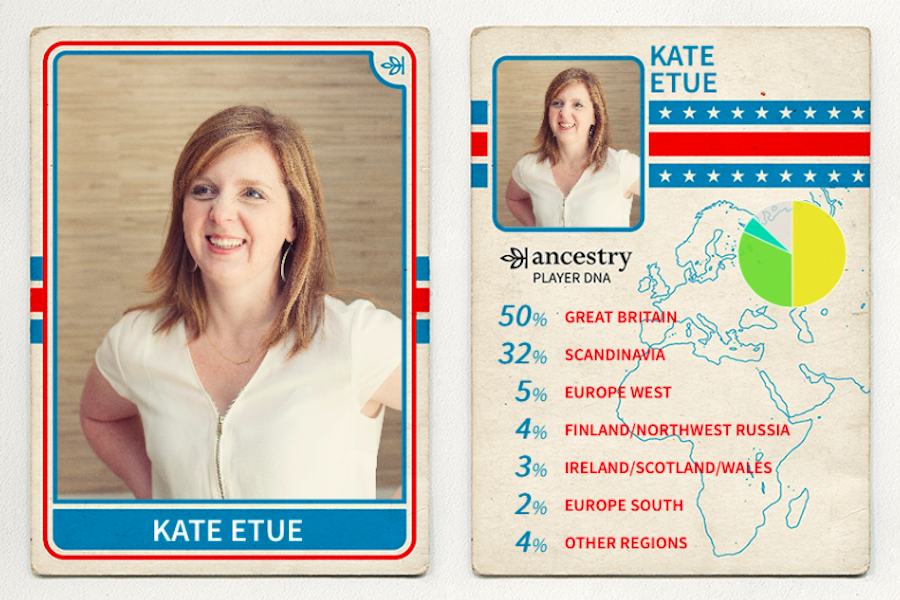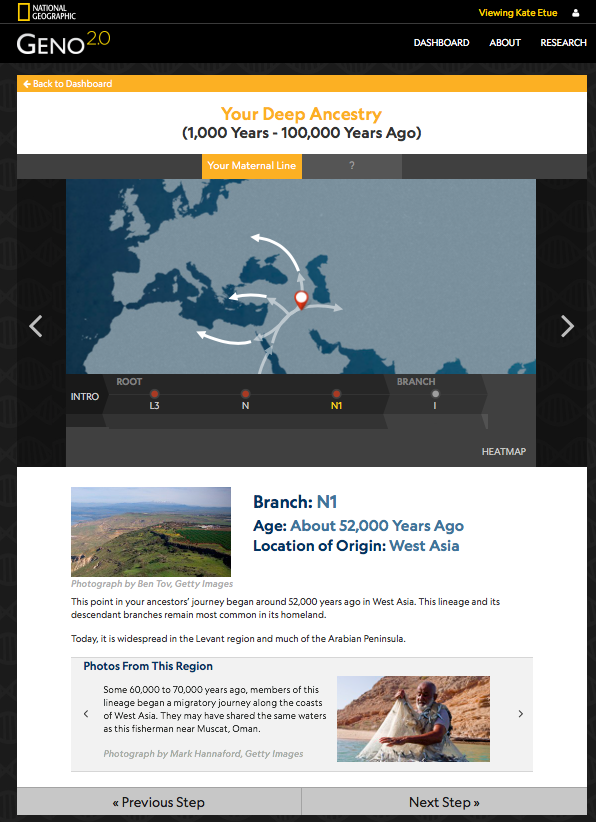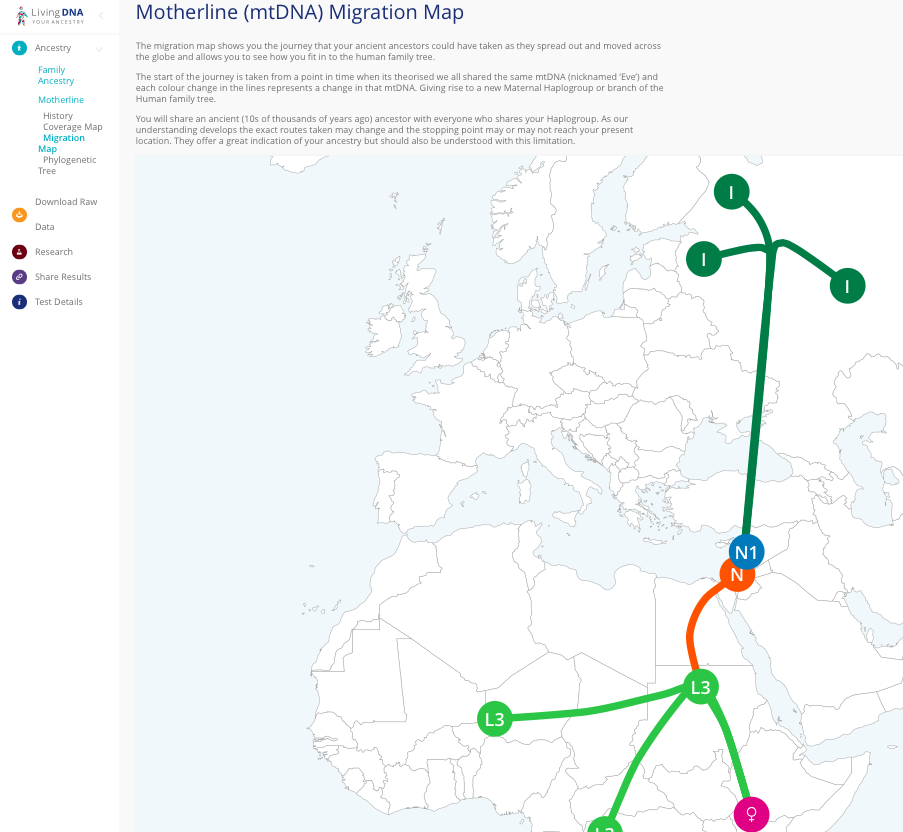Ever since my sister mentioned that she found an Austrian princess in our family tree, I’ve become a bit of a genealogy buff. I’ve spent some time building out our family tree on Ancestry.com and it turns out, my daughter can apply for a Daughters of the American Revolution scholarship when it’s time for college.
And we do, in fact, have some rebellious, runaway Hapsburg princess in my line.
But the family info runs out eventually on sites like Ancestry, so I was curious to see what a genealogical DNA test would tell me, and whether different companies would tell me different things.
As a fair-skinned redhead with grandparents on both sides from Sweden, I was pretty sure I already knew my results. But then a friend’s test results revealed a half-brother in Australia. Another friend-of-a-friend was able to find her birth mom through a DNA test. So, I thought, let’s do this. Who knows what I might find!
That said, it’s important to note that when we were talking about giving all of these DNA testing services a try, Liz said she probably wouldn’t do it herself. She hates the idea of sending her DNA off to a big corporations, because who knows what they’ll do with it?
(And yes, there is a LOT of fine print about what they can do with it, so be sure to actually read that if you have concerns about privacy. Which, you probably should.)
But for me, curiosity won out. And man, all those commercials are compelling! So, here’s what happened when I sent my DNA off to three different DNA testing companies — Ancestry.com, Helix/National Geographic, Living DNA — to learn and compare my personal results.
Note: Each company below provided us with a complimentary testing kit so we could compare their products for the purpose of this analysis.
Related: This ancestry kit is a great gift for the person who has everything
Ancestry.com

My results: 50% Great Britain, 32% Scandinavia, 5% Western Europe, 4% Finland & Northwest Russia, 3% Ireland/Scotland/Wales (so much for the red-hair connection), 2% Southern Europe and 4% other regions.
Because Ancestry.com is all about genealogy research, their DNA results focus on (wait for it) your ancestry.
They offer a cool interactive map that lets you click on different periods through history, and you can see where your ancestors were and how they were migrating. It’s very personal in that, if you have any relatives in an Ancestry.com family tree from that time, they will show up on the map with little historical snippets about the time. Interesting!
The DNA Matches page will reveal anyone else in their system who shares a DNA match with you. My closest relative turns out to be a 2nd cousin — but this is also how my friend discovered his half-brother in Australia. Skeletons, wow.
If you want to use this info to build your family tree, that’s where their DNA circles come in — you can share your info with other members who have DNA that matches your own.
If you really want to go deep, you can answer surveys about your lifestyle, personality, family details, hobbies, traits, and so on. It seems that this helps them with large-scale research to match quiz results to the DNA and be able to establish trends. I personally completed the Life Story quiz, which serves up census-style questions about what type of dwelling I live in, marital status, and other basic demographics. As a data-geek, I’m definitely curious to see what kind of connections they’ll be able to make with this research.
Price: $99, currently on sale for $69
Ancestry.com Bottom line: If you’re looking for a DNA test that will help you find living relatives or build out your family tree more easily, this is the one to try. Plus, you get that fun trading card (shown at very top), not that you’d trade it with friends.
Related: Incredible custom illustrated family portraits that make the most special gift ever
Helix & National Geographic
My results: 50% Northwestern Europe, 23% Northeastern Europe, 15% Eastern Europe, 10% West Mediterranean, and 2% Jewish Diaspora.
Other info they provide: My maternal haplogroup (I1A1E, extremely rare) and my hominin ancestry. I’m higher-than-average level Neanderthal; don’t be jealous.
Helix has partnered with National Geographic to create the Geno 2.0 Next Generation project, a nonprofit project attempting to analyze historical patterns in DNA. So, while Ancestry.com focuses on you and how other people in their database fit into your own family tree, Helix shows where you fit into the grand scheme of humanity’s genetic map.
That’s clear in Helix’s attention to your “deep DNA” — which they find by analyzing mitochondrial DNA, or mtDNA, and Y-chromosome DNA. (Not words I use everyday.) Basically, because these markers exist on your DNA through generations, they’re able to look into the ancient past (up to 200,000 years ago) to see where your ancestors came from.
Crazy.
I found the educational aspects of my personal history to be much more detailed on Helix. It gives you a lot of information about the countries you come from in recent history (England and Germany for me), as well as fascinating history about your “deep origin.” That’s where the first people in your genetic line came from and how they migrated to get you where you are today.
The results were also slightly different from Ancestry.com, and this was the only of the three DNA testing services to mention any Jewish heritage.
And of course, with NatGeo as a partner, you get incredible photos of the places and people groups as well.
My very favorite part of Helix is their Genius matches. It’s just what it sounds like — it reveals various geniuses through history that you share a DNA match with. Turns out I share a maternal match with Abraham Lincoln (thankyouverymuch), Copernicus, Benjamin Franklin, and Marie Antoinette. Just note that this does not mean you are at all closely related to them. In fact, the paternal match I share with Benjamin Franklin is through an ancestor who lived 120,000 years before Franklin. But still, you guys. DNA twinsies.
Another cool feature that’s unique to Helix are the add-ons you can purchase after you take the basic DNA test. For example, you can order a custom Italian-wool blanket (or socks, t-shirt, scarf and more) woven with your own DNA pattern; you can discover exactly which wines will taste the best to you; and you can even find out your genetic response to exercise.
There are tons of options so shop around!
Price: $99.95 (for the version I used)
Helix and National Geographic Bottom line: If you really want to go deep into learning where you come from, even before recorded human history, there is a wealth of information and education to be gained through this service.
Related: The family history app to download before your next visit to grandma’s house
Living DNA
My results: 52% Great Britain & Ireland, 35.7% North and West Europe, 9% Eastern Europe, and 2.9% Southern Europe.
A deeper dive shows that my 9% Eastern Europe is 4% Baltics, 2.6% Mordovia and 2.4% Finland & Russia. This is the only site that specified Southern Europe as Tuscany.
Other info they provide: Haplogroup I1A1E (a match with Helix, yay!)
Of the three tests I tried, Living DNA is the most basic in its presentation of the findings. You can choose to see the data presented in a variety of charts, including an odd dot-filled human body shape which isn’t all that helpful in terms of actually understanding your history.
That said, I really like their interactive map feature which shows specific pinpoints of the locations your ancestors lived over time, along with brief historical narratives of that era.
The pictures aren’t nearly as good as National Geographic’s, but it’s still a good, simple introduction, especially for kids who are doing school reports. In fact my kids are particularly fascinated by the fact that our ancestors were some of the first to enter Europe, then back-migrated to Kenya again. And the descriptive explanation of how they killed animals on the hunt garnered a lot of squeals.
The summary info from Living DNA will also include some of the science behind studying haplogroups, which is terrific for families who are using this kind of analysis as an educational tool.
Price: $159, currently on sale for $99
Living DNA Bottom line: If you want a simple, concise explanation that doesn’t require much digging, and you aren’t really interested in connecting with others or making your results public, this is a smart option. Plus, it’s on sale right now for $60 off!
So, how did my results compare?
Each of the companies does a great job communicating each step along the way of the DNA testing process — sample received, sample being tested and so on. If you’re wondering how you receive your data, it’s digitally, via password-protected pages on their individual sites. There are a variety of collection methods including a whole lot of saliva (surprisingly hard to generate) to swabbing my cheek.
But ultimately, the process for receiving my results from each company is basically the same.
As for the results, in general they were all pretty similar. I’m basically 100% European (big surprise if you look at my picture).There is a perfect match between my haplogroup results on Living DNA and Helix.
There is more differentiation among the services however, when it comes to information about my recent ancestors, beyond the 50-52% Great Britain.
My results were anywhere from 23% to 35% Scandinavia and Northern Europe; a range of 2-10% for that Tuscany or “West Mediterranean” portion; and then there was that surprising 2% Jewish Diaspora that Helix alone noted. So you get a good sense of your background with any of them, but I couldn’t gage which one is most accurate down to the percentage point.
Ultimately, this was a fun way for me as a genealogy buff to take a look into my family’s ancient history, but the recent past wasn’t much of a surprise. I imagine that would be far more interesting to those who were adopted and have less information about their lineage, or those with much more diversity in their ancestry.
Still, I’m glad to know I’m related to and therefore, as smart as (of course) Ben Franklin. And, now I know which countries to root for during the Olympics after the US: Go UK and Germany!
My final DNA testing kit recommendations…
–Helix is my top choice, providing you with the most information overall (it goes way back!) plus the power of Nat Geo to explain what it all means — though it doesn’t include specific recent ancestry connections if that’s important to you.
–Ancestry.com is an excellent value, especially for genealogy buffs who would be interested in learning more about a second cousin in Oregon than I am. It’s great for making connections beyond determining your ancestral makeup, and provides those 2 to 3 generations of back connections.
–LivingDNA is the most basic of the three services that I tried.






